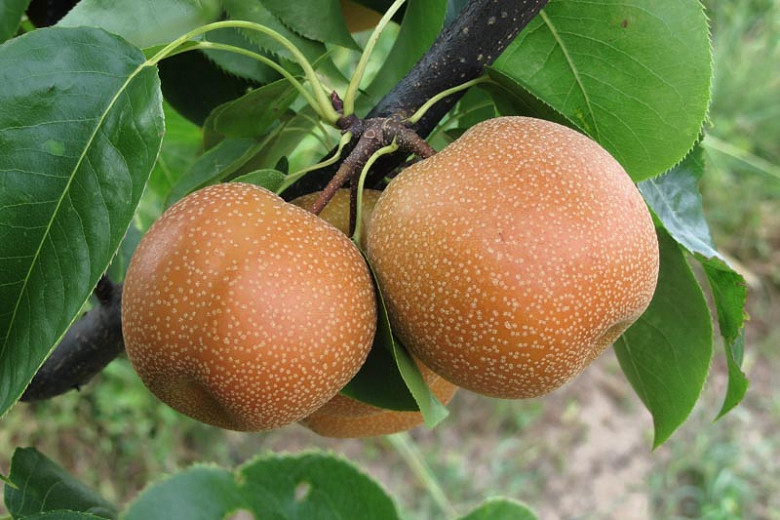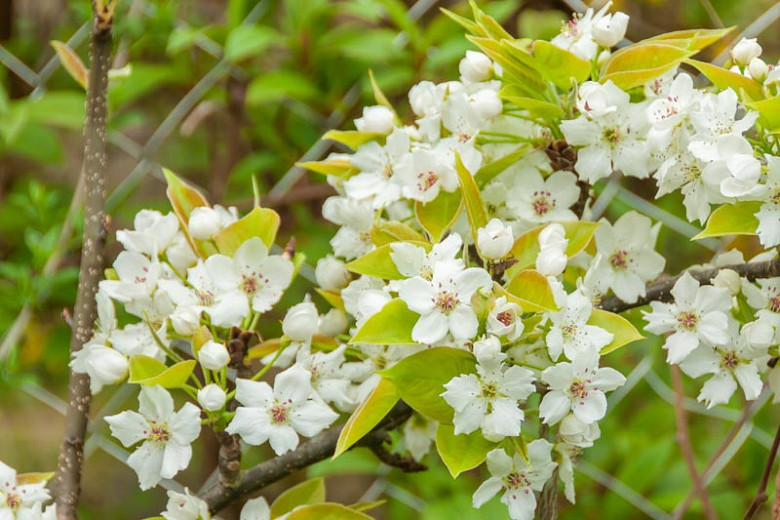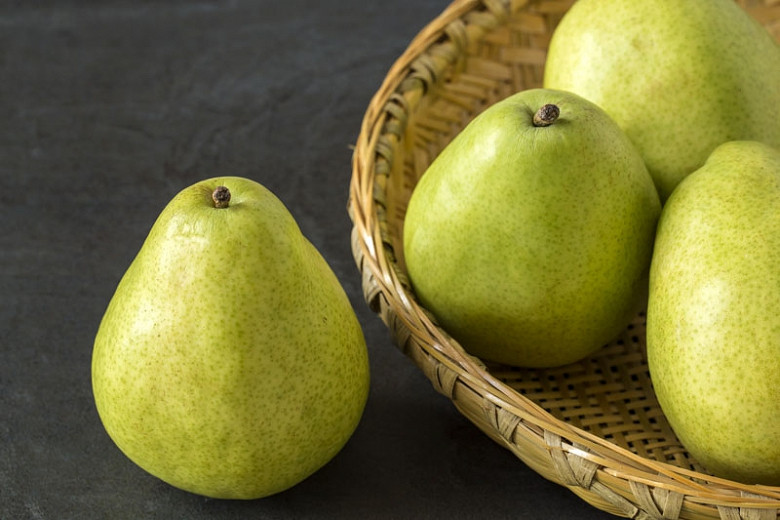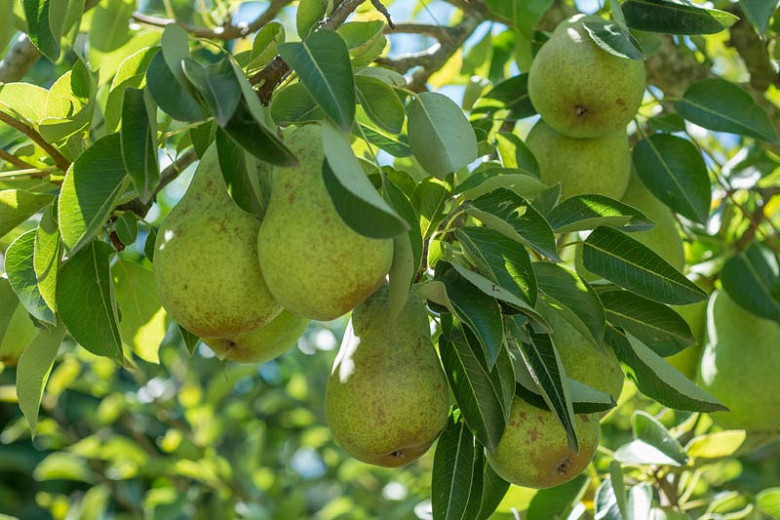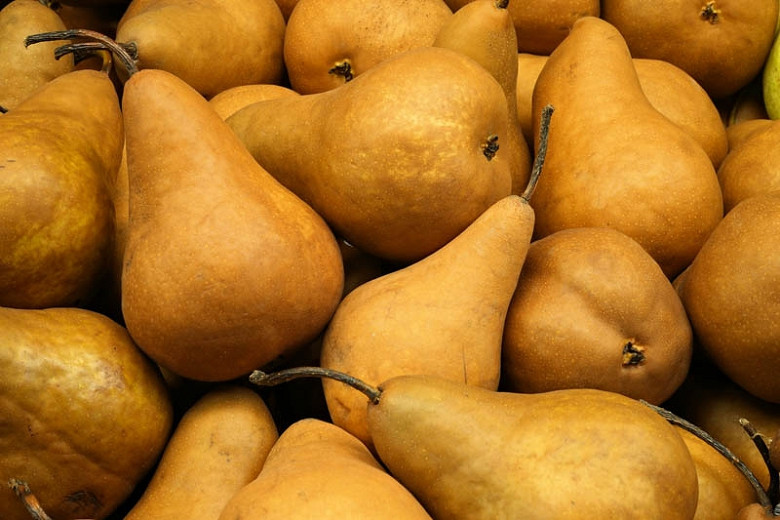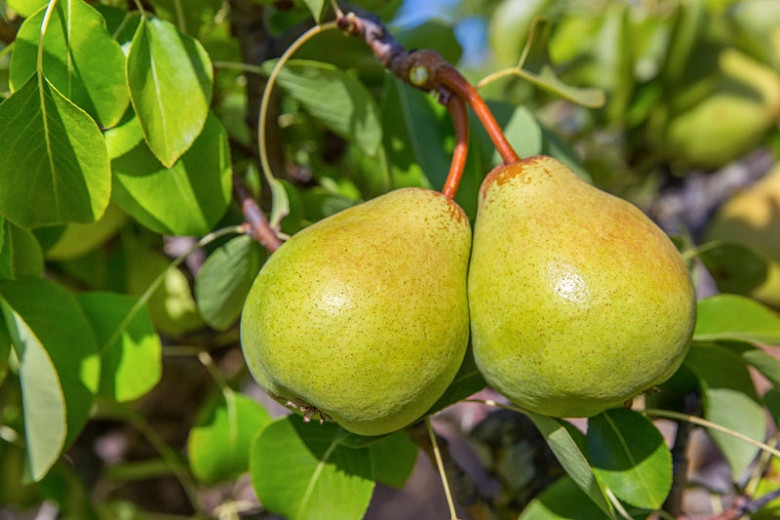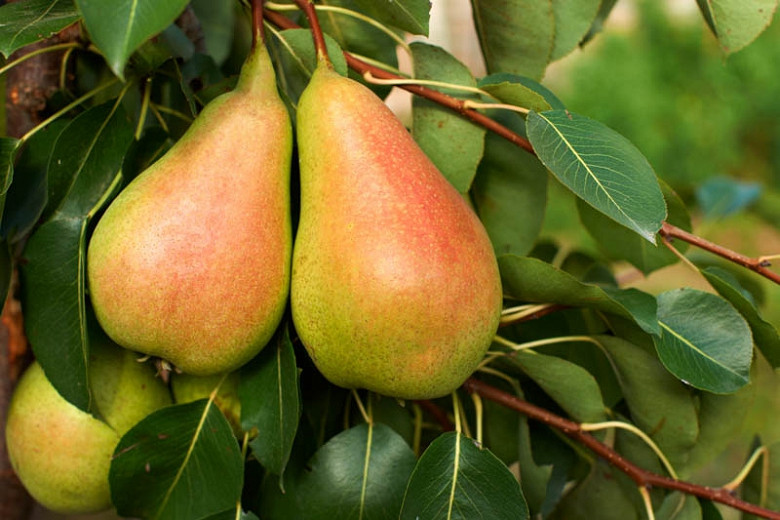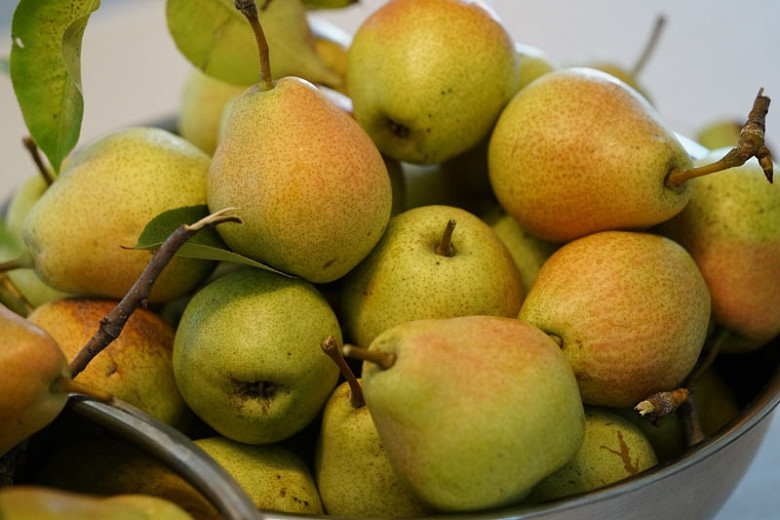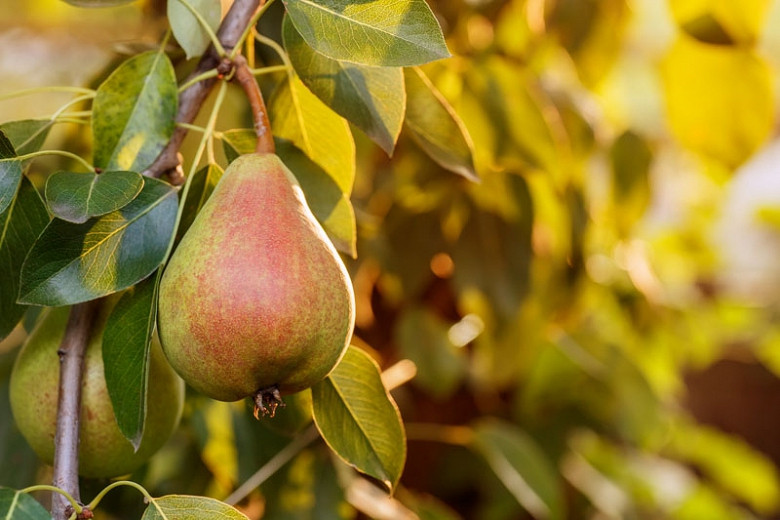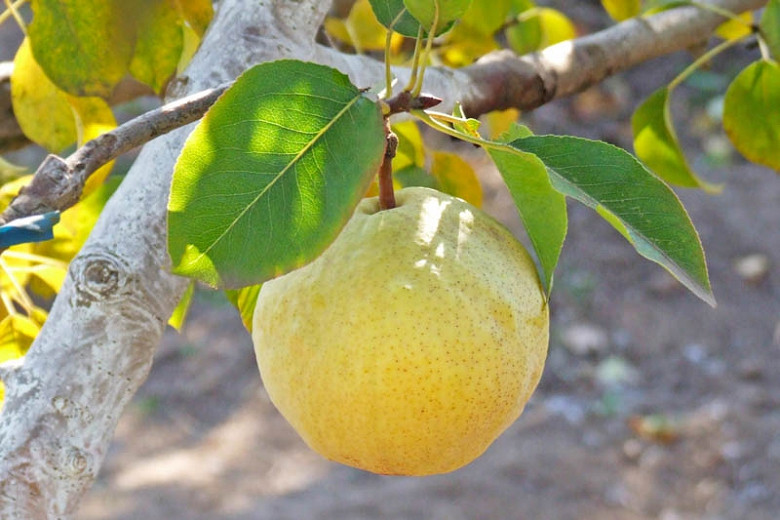Pyrus pyrifolia Chojuro (Asian Pear)
A popular Asian pear variety, Pyrus pyrifolia 'Chojuro' is a dessert cultivar with a profusion of fragrant, creamy white flowers in the early midseason (mid-spring). Draped in clusters along the branches, they are truly a sight to behold. They are followed in late summer to early fall by a heavy crop of medium to large, round, golden brown pears. Their creamy flesh is crisp, and juicy with a sweet butterscotch flavor. They can be stored for up to 5 months. Originating from Japan in 1895, Chojuro is a heavy fruit producer which requires pollination by at least two other varieties with the same bloom period such as Bartlett and Hosui. Emerging coppery-bronze in spring, the foliage of elliptic glossy green leaves turns brilliant red in fall. Beautiful in bloom, handsome in full leaf, heavy with luscious pears, attractive in fall, and picturesque in winter, pear trees are very rewarding additions to the landscape across the seasons.
- Grows up to 8-10 ft. tall (240-300 cm) and 6-7 ft. wide (180-210 cm).
- A full sun lover, this tree is easily grown in deep, fertile, moist, well-drained soils. Prefers a sheltered, frost-free position.
- Pears should be pruned every year to get the best crop. They also need to be thinned to about 5 in. apart (12 cm) in late spring or early summer if you want to reap the best-quality fruit.
- Keep an eye out for aphids, caterpillars, codling moth, pear blister mite, pear midge and pear, cherry slugworm, pear scab, pear rust, brown rot, blossom wilt, and fireblight.
- Propagate by grafting or chip budding onto a clonal rootstock for fruit; quince rootstocks are usually used. The rootstock used will largely determine the vigor.
Requirements
| Hardiness | 5 – 8 |
|---|---|
| Climate Zones | 2, 3, 4, 5, 6, 7, 8, 9, 10, 11, 12, 14, 15, 16, 17, 18, 19, 20, 21 |
| Plant Type | Fruit, Trees |
| Plant Family | Pyrus – Pears |
| Exposure | Full Sun |
| Season of Interest | Spring (Mid,Late)Summer (Early,Mid,Late)Fall |
| Height | 8' – 10' (240cm – 3m) |
| Spread | 6' – 7' (180cm – 210cm) |
| Water Needs | Average |
| Maintenance | High |
| Soil Type | Clay, Loam, Sand |
| Soil pH | Acid, Alkaline, Neutral |
| Soil Drainage | Moist but Well-Drained, Well-Drained |
| Characteristics | Fragrant, Showy, Fruit & Berries |
| Tolerance | Clay Soil |
| Attracts | Butterflies |
| Garden Uses | Wall-Side Borders |
| Garden Styles | Informal and Cottage |
